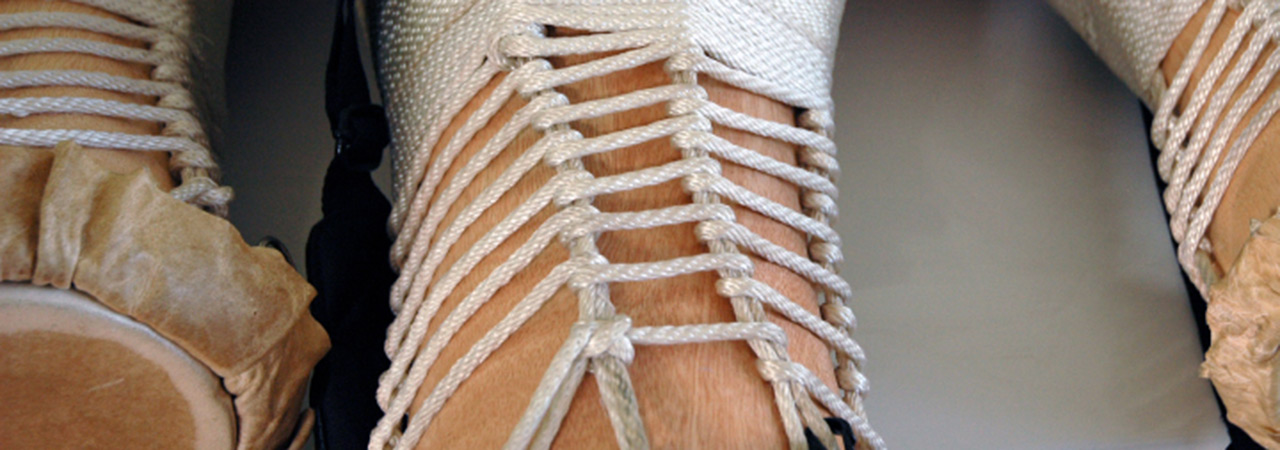
By getting to know a diverse array of traditional artists and art forms in the Masters of Traditional Arts Education Guide, young people and adults alike can think more about themselves and their own traditions. In addition to introducing important and vital music, crafts, stories and people from all over the United States and the world, this guide deliberately asks, “What do you know about your sense of place? Who are masters of tradition in your community? How can you discover more about your traditions as well as those of other cultural groups in your community?” Folklorists find that by first examining our own cultural heritage, we can lessen bias as we recognize that, although another cultural group may appear exotic or hard to understand, all cultural groups share common ways of life that call for ritual, celebration, custom, music, crafts, dance, food, stories and special language—in other words, folklore.
The content and varied formats of the Masters of Traditional Arts website provide a written artist profile; audio profile, interview or music sample; a video segment; and formal and informal photographs for each of 26 National Heritage Fellows listed below. These 26 artists represent the scope and diversity of the 399 artists and art forms that students can discover in the Masters of Traditional Arts website. The many interdisciplinary curriculum suggestions in this guide are adaptable for any of the other artists.
| Name | Ethnicity | State | Tradition |
|---|---|---|---|
| Etta Baker | African American | NC | Musician |
| Earl Barthé | African American Creole | LA | Building Artisan |
| Mozell Benson | African American | AL | Quilter |
| Lila Greengrass Blackdeer | Native American | WI | Basket maker |
| Eddie Blazonczyk | Polish American | IL | Polka Musician |
| Lavern Brackens | African American | TX | Quilter |
| Liz Carroll | Irish American | IL | Fiddler |
| Jim “Texas Shorty” Chancellor | Anglo American | TX | Fiddler |
| Gladys LeBlanc Clark | Cajun | LA | Weaver |
| Sidiki Conde | Guinean American | NY | Musician and Dancer |
| Antonio De La Rosa | Mexican American | TX | Conjunto Musician |
| Sonia Domsch | Czech American | KS | Bobbin Lacemaker |
| Qi Shu Fang | Chinese American | NY | Peking Opera Performer |
| Five Blind Boys | African American | GA | Gospel Musicians |
| Wayne Henderson | Anglo American | VA | Instrument Maker |
| Bettye Kimbrell | Anglo American | AL | Quilter |
| Jeronimo E. Lozano | Peruvian American | UT | Retablo Maker |
| Norma Miller | African American | NY | Tap Dancer |
| Allison “Tootie” Montana | African American | LA | Mardi Gras Indian Chief and Costume Maker |
| Konstantinos Pilarinos | Greek American | NY | Wood Carver |
| Buck Ramsey | Anglo American | TX | Cowboy Singer and Poet |
| Simon Shaheen | Arab American | NY | Oud Musician |
| Sophiline Cheam Shapiro | Cambodian American | CA | Cambodian Classical Dancer |
| Clyde “Kindy” Sproat | Hawaiian Native | HI | Hawaiian Musician |
| Ralph W. Stanley | Anglo American | ME | Boat Builder |
| Elaine Hoffman Watts | Jewish American | PA | Klezmer Musician |
Teachers and librarians may use these materials as a stand-alone curriculum or in conjunction with specific subject areas to teach and reinforce a variety of skills and concepts. A sample of the scope available to educators is listed below.
| Subject Area | Content | Skills |
|---|---|---|
| Language Arts | Mastery, creativity, storytelling, poetry, reflection, humor, personal narrative, regional dialect, folk speech, biography, family folklore,bilingual artists and issues, effect of translation on song and text, connection of language and culture, point of view | Comparing and contrasting, understanding and using symbol and metaphor, vocabulary and special terms, listening, writing, editing, retelling, summarizing, storytelling, analyzing narrative perspective, synthesizing |
| Social Studies | Geography, history, belief and spirituality, oral history, historical events, cultural groups, cultural diversity, sense of place, changing roles of women, occupations, relationship of environment and culture, cultural analysis, migration and immigration, influence of mass media, intergenerational relationships, urban and rural life, childhood, social gatherings, local history | Mapping, fieldwork, cultural preservation, cultural analysis, community-based research, ethnography, point of view, using primary sources |
| Visual and Performing Arts | Mastery and creativity, improvisation, pattern and variation, learning and teaching specific genres, sacred and secular forms, individual musicians and singing styles, classical genres from other countries, ritual, practice and perseverance, materials, instruments, making of instruments, rhythm, dance, folk music revival, color, pattern | Comparing and contrasting genres and styles, tracing instruments across genres, studying music across cultural groups, interpreting symbols, crafts, analyzing artifacts and images, comparing crafts, genres such as needlework or basketry |
| Science | Nature, ecology, environment, materials, special terms, sound, climate | Understanding the environment, studying the impact of the natural world on everyday life, following directions, developing vocabulary |
| Math | Measuring, counting, geometry | Applying mathematics to natural situations, following directions, using precise terms and practices |
| Technology | Creativity, innovation, communication, collaboration, research, information fluency, technology operations and concepts, digital citizenship | Employing a variety of media and formats, finding and using information ethically, managing and creating multimedia activities, evaluating information, point of view |